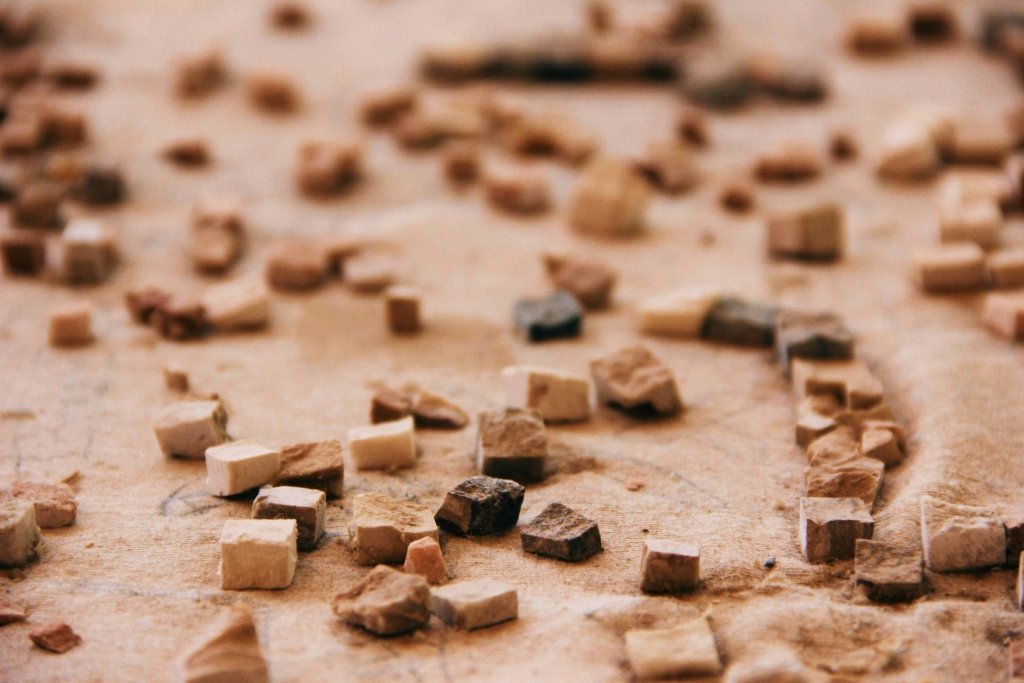We hope everyone is having a joyous and healthy holiday season. While we are grateful for what this year has brought us, we also saw much human suffering around the world, often driven by violence, conflict, and some of the ugliest parts of human nature. Yet we continue to see much to be hopeful about. One of those is the resilience of human ingenuity and humanity’s unquenchable thirst for knowledge and improvement. In that spirit, we offer some examples of what our best and brightest have been up to this year. Some suggest investable opportunities, but all are undeniably inspiring, and, dare we say, just plain cool.
Human health
In the next week, many of us will mark the New Year by resolving to adopt healthier lifestyles, striving to improve both quality and quantity of life. Those resolutions will likely involve pledges to eat healthier. Less sweets, for instance. But what if that weren’t necessary? That’s the hope of scientists at Harvard University’s Wyss Institute for Biologically Inspired Engineering, who are working on an enzyme that, when added to and consumed with sweet treats, would reduce absorption of sugar into the bloodstream and instead turn it into fiber, which can improve gut health. Wyss Institute researchers are working on securing regulatory approval and figuring out how to lower production costs.

A healthy lifestyle isn’t just about diet, however. Although science still doesn’t have a definitive answer for why humans need sleep, we do know without a doubt that bad things happen to us when we don’t get enough of it. And new tech on the market claims to help us do just that, including electrode-laden headbands and masks worn at night to modulate brainwaves. (Don’t like the idea of wearing gadgets to bed? There’s some evidence to suggest a heavy, weighted blanket can help as well, even if this isn’t exactly space-age technology.)
This year also saw advances in helping the body to heal when things go wrong. A project originally funded by DARPA (Defense Advanced Research Projects Agency) could result of a variety of smart bandages, embedded with sensors and electronics that can help doctors closely monitor how wounds are healing or even actively assist in healing, whether through electrotherapy or by actively fighting infection through UV therapy or by administering doses of antibiotics when sensors deem it necessary.
A different team of Wyss Institute researchers are working on a different approach to wound healing: anthrobots, which are tiny biological robots made from human tracheal cells that can be programmed to speed wound healing within the cell donor’s body without triggering an immunosuppressant response. Hopefully, anthrobots might also be able to help clear arterial plaque buildup in patients with heart disease, repair spinal cord or retinal nerve damage, or even deliver drugs to targeted tissues.
Scientists also continue to work on regenerating body parts that wear out or become damaged. On Dec. 14, Japanese scientists began human clinical trials on a drug that would help humans regrow teeth. Meanwhile, multiple scientists continue to explore ways to regenerate organs damaged by disease, including the heart.
Climate change and energy
Most scientists will argue that it isn’t just the human body that needs healing – our planet does as well. In 2024, we came across a number of initiatives aimed at helping. Among the more audacious are plans to encourage rivers and oceans to absorb even more greenhouse gases from the atmosphere than they already do. Researchers at American University believe this can be achieved by raising the pH of the water (i.e., making it more alkaline). Several startups are experimenting with adding alkaline substances like limestone or magnesium oxide to rivers to achieve this, though skeptics worry about their effect on wildlife and ecosystems.

In the meantime, the rise in the demand for power from AI, the transition to electric vehicles, and bitcoin mining is coinciding with the increasingly urgent need to address climate change linked to the use of fossil fuels. Sustainable sources of energy like solar and wind have great potential, but only if battery technology continues to advance. This year saw promising research from Toyota on a way to quickly restore lithium-ion batteries that have chemically degraded (and thus can no longer hold a charge) and a mini atomic-battery with an eye-popping 50-year lifespan.
It’s not just about solar, wind, and batteries, however. This year, researchers continued to look for ways to create substitutes for fossil fuels. A Chicago-based biotech startup has identified a bacteria, Clostridium autoethanogenum, which consumes carbon dioxide and produces ethanol as a waste product. The technology, based on a bacteria first identified in rabbit droppings, is already being tested in steel mills in China, and aerospace companies and airlines hope it could prove viable as an alternative for jet fuel.
Aerospace
Airlines aren’t putting all their eggs in that basket, however. Along with private-equity firms, they are also betting on firms that believe they can use renewable electricity, carbon dioxide, and water to make synthetic jet fuel, or e-Fuels. Players in this space include Twelve and Infinium.
In the meantime, they are also looking at new plane designs that reduce energy consumption regardless of what fuel is being used. The California-based startup JetZero has taken inspiration from the blended wing designs of stealth bombers to create a jet design that generates lift from the whole plane, rather than just the wings. The result is lower fuel consumption, and – as an added bonus – less noise.
Food
Not everything is up in the air, however. Back on the ground, scientists are experimenting with ways to make a beloved staple of the modern American diet, beef, more sustainable. An Israeli company, Aleph Farms, has created a way to create “steaks” by cultivating bovine cells (specifically, a Black Angus cow in California named Lucy). Aleph steaks have been approved by the Israeli Health Ministry.
Of course, one of the biggest environmental problems with beef is the amount of methane cows belch out. So perhaps the solution might come not by growing bovine cells in a lab or manufacturing facility but by merely making cows produce less methane. That’s the approach being attempted by scientists at University of California-Irvine, UC-Berkeley, and UC-Davis. They propose using CRISPR gene editing to create a gut bacteria that results in lower methane emissions. The resulting treatment would then be fed to calves to change the make up of their gut biomes.
Computing and chips
Of course, the public continues to focus on chips and artificial intelligence whenever the phrase “new technology” comes up. Even as the chip industry feverishly works to continue Moore’s law with ever-smaller silicon-based designs, some researchers are looking into radically different approaches that could change the game entirely – and a good thing, too, since many believe that the laws of physics are about to crash into Moore’s law and prevent future advances.
Biologists have long marveled at just how much information can be encoded in DNA – a single gram of the stuff can contain 215 petabytes of data (one petabyte = 1 million gigabytes). Now it turns out that DNA-infused chips could bring processing to new heights as well. (As an added bonus, some hypothesize that DNA-based computing technology could consume less energy and be more durable as well.)
Another approach also involves a departure from the silicon-based designs that dominated the computing industry so much they inspired a moniker for a valley. In Italy, Ephos is developing quantum chips that are made on glass and use light rather than electricity to transmit information. Glass-based quantum chips have a decided advantage over silicon-based counterparts – they operate at room temperature and do not require cryogenic cooling systems.

Conclusion
This year has certainly not been without its challenges, but human ingenuity is making itself known all over the world, giving us all cause for hope in 2025 and beyond.
We wish all our readers a healthy, prosperous New Year, full of great ideas and advances. Signal From Noise will return to its normal biweekly schedule next year, publishing on alternate Saturdays.
In the meantime, we encourage you to explore our full Signal From Noise library, which includes deep dives on investments related to natural disasters and an overview of the semiconductor industry. You’ll also find a recent discussion of weight loss-related investments, artificial intelligence, and the Millennial generation.






